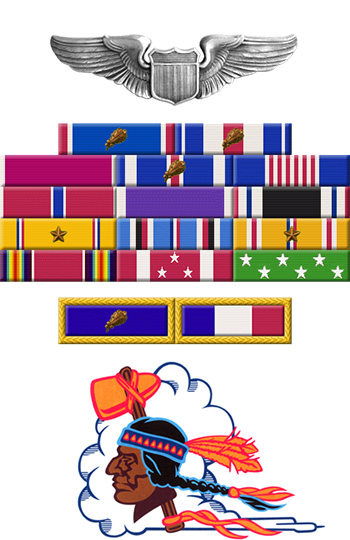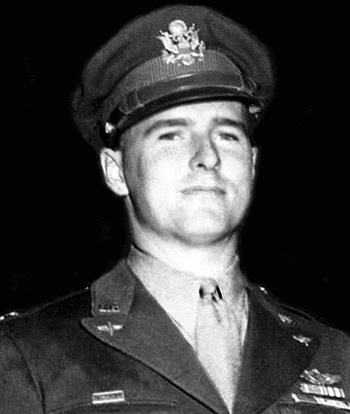
|
William Edwin Dyess |
 |
|||
| Rank, Service | ||||
Lieutenant Colonel, U.S. Army Air Forces |
||||
| Veteran of: | ||||
|
||||
| Tribute: | ||||
Ed Dyess was born on August 9, 1916, in Albany, Texas. He went through flight training at Kelly and Randolph Fields in San Antonio, Texas, and was commissioned a 2Lt in the Army Air Corps in 1937. He commanded the 21st Pursuit Squadron at Barksdale Field, Louisiana, and led the squadron to Nichols Field in the Philippines in October 1941. The 21st Pursuit Squadron was assigned to the 24th Pursuit Group and suffered heavy casualties after the Japanese attacked in December 1941. While flying P-40 Warhawks, Lt Dyess shot down between 2 and 6 Japanese aircraft, but none were ever officially credited to him due to all squadron records being lost during the war. Dyess helped supervise the evacuation of American forces from the Philippines before he was captured and taken as a Prisoner of War on April 9, 1942. He and others that surrendered at Bataan began the Bataan Death March that same day. After spending a year as a POW, Ed Dyess escaped from his captors and joined up with Filipino guerillas for several months before being evacuated by a U.S. Navy submarine to Australia in July 1943. After hospitalization, Dyess was assigned to fly P-38 Lightnings in preparation for a return to combat. On December 22, 1943, Lt Col Dyess was killed when he elected to remain with his burning aircraft instead of bailing out over a populated area of Burbank, California. Dyess Air Force Base, in Abilene, Texas, is named in his honor in 1956. Ed Dyess was buried at the Albany Cemetery in Albany, Texas. He was posthumously awarded the Texas Legislative Medal of Honor on August 26, 2015. |
||||
|
||||

